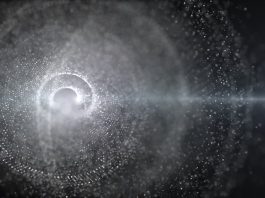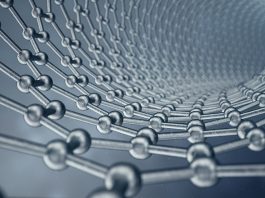Researchers from the University of Gothenburg have shed new light on how atoms work through a water-based experiment.
Shining light on a water droplet creates effects analogous to what happens in an atom. If you whisper by the wall in the dome of St Paul’s Cathedral in London, you’ll discover that the sound bounces off the dome’s walls all the way around and is audible on the opposite side. This is why the Cathedral’s dome has been dubbed ‘the whispering gallery.’
The same effect is achieved when a beam of light is shone into a water droplet. Rays of light bounce off the inner wall of the water droplet, going around inside it. A resonance phenomenon occurs when its circumference is a multiple of the light’s wavelength, just like the sound inside the Cathedral’s dome, making the droplet shine brighter.
The review, ‘Fano Combs in the Directional Mie Scattering of a Water Droplet,’ was published in the journal Physical Review Letters.
Understanding how the water droplet flashes
“In our experiments with laser light, we could see that the light is trapped inside the water droplet. When the droplet shrinks due to evaporation, it appears to flash every time its size is right to create the resonance phenomenon,” explained Javier Marmolejo, a doctoral student in physics at the University of Gothenburg and lead author of the study.
Using a Nobel Prize-winning tweezers technique, the researchers were able to trap the water droplet using beams, which targeted it from two directions. The laser beam is refracted in the water droplet and scatters, trapping the light inside.
The size of the dome in St Paul’s Cathedral cannot be changed, but a water droplet can change size as it evaporates. The researchers then discovered how the droplet flashed in a way similar to what occurs when an electron is emitted from an atom when illuminated by light of varying wavelengths.
They were also able to use a quantum mechanics analogy to explain how the resonances – the size of the droplet when the scattering was greatest – correspond to the energy levels of an atom. This makes the droplet a model of an atom with the added bonus that its size can be varied. It provides deeper insights into how light scatters while being a model for understanding how atoms work.
Using the discovery for scientific research
“Since a water droplet is about 100,000 times larger than an atom, we get a model of an atom that is visible to the naked eye – an ‘optical atom’,” said Marmolejo.
Laser spectroscopy generates data on energy levels, bonds and structures in atoms and molecules. Similarly, the scattered light spectrum from the water droplets generates data about the actual droplets. According to the researchers, this can measure the evaporation rates of microscopic droplets with high precision.
This discovery can be applied to liquids other than water and may be helpful when studying aerosol droplets in inhalers used for medication, for example. The researchers also note that this technology offers a new way to analyse water quality.
Marmolejo concluded: “Small amounts of pollutants in the water change the way the droplets flash, which opens up the possibility of quick and easy measurements of chemical or biological pollutants in water droplets.”









